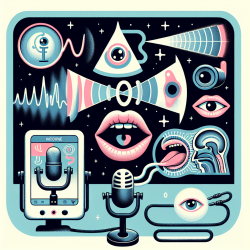As speech-language pathologists, we are constantly seeking innovative methods to enhance our practice and deliver the best outcomes for our clients. One such promising technology is ultrasound imaging, specifically 2D and 3D ultrasound imaging, which has shown tremendous potential in the field of speech-language pathology. This blog post explores the applications of ultrasound imaging in speech-language pathology and how practitioners can implement these techniques to improve their skills and client outcomes.
The Power of Ultrasound Imaging
Ultrasound imaging of the tongue offers a safe, non-invasive, and cost-effective method to visualize tongue motion during speech and swallowing. Unlike x-ray-based imaging methods, ultrasound does not involve radiation exposure, making it a safer option for extended recording sessions and repeated examinations.
Advantages of Ultrasound Imaging
- Low cost and bio-safety
- Ease of image acquisition
- Non-invasive for patients
- Suitable for studying clinical populations, including children
Applications in Speech-Language Pathology
Ultrasound imaging can be used in various ways to benefit speech-language pathologists and their clients:
- Biofeedback: Real-time visualization of tongue shape can be a powerful tool for biofeedback in speech therapy, particularly for clients with articulation disorders or compensatory articulation errors.
- Assessment of Swallowing: Ultrasound imaging allows for detailed analysis of the oral phase of swallowing, which can be particularly useful for clients with dysphagia.
- Research and Education: The ability to visualize and analyze tongue motion provides valuable insights for research and educational purposes, helping to advance the field of speech-language pathology.
Implementing Ultrasound Imaging in Practice
For practitioners looking to implement ultrasound imaging in their practice, here are some steps to get started:
- Acquire the Equipment: Invest in a basic ultrasound machine, which has become more affordable in recent years. Consider portable options for flexibility.
- Training: Seek training on the use of ultrasound imaging in speech-language pathology. This may include workshops, online courses, or collaboration with experienced professionals.
- Integrate into Therapy: Start incorporating ultrasound imaging into your therapy sessions. Use it as a biofeedback tool for articulation therapy or to assess swallowing function.
- Research and Document: Conduct research to explore the effectiveness of ultrasound imaging in your practice. Document your findings and share them with the broader speech-language pathology community.
Encouraging Further Research
While ultrasound imaging has shown great promise, there are still many opportunities for further research. Speech-language pathologists are encouraged to explore new applications, refine existing techniques, and share their findings to contribute to the growing body of knowledge in this field.
To read the original research paper, please follow this link: Applications of 2D and 3D Ultrasound Imaging in Speech-Language Pathology










